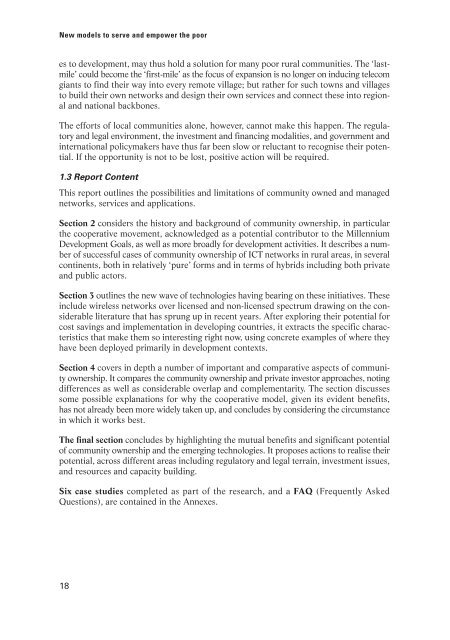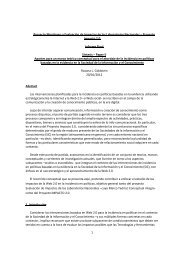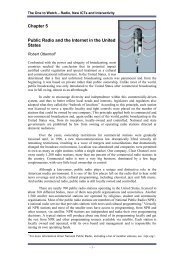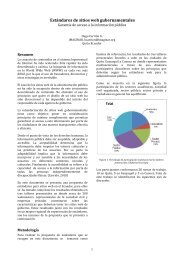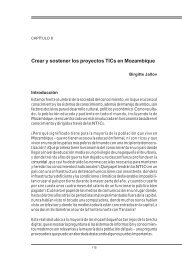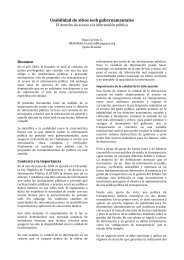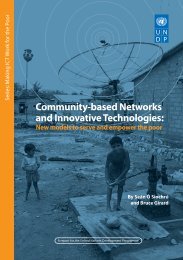Community-based Networks and Innovative Technologies: New ...
Community-based Networks and Innovative Technologies: New ...
Community-based Networks and Innovative Technologies: New ...
Create successful ePaper yourself
Turn your PDF publications into a flip-book with our unique Google optimized e-Paper software.
<strong>New</strong> models to serve <strong>and</strong> empower the poores to development, may thus hold a solution for many poor rural communities. The ‘lastmile’could become the ‘first-mile’ as the focus of expansion is no longer on inducing telecomgiants to find their way into every remote village; but rather for such towns <strong>and</strong> villagesto build their own networks <strong>and</strong> design their own services <strong>and</strong> connect these into regional<strong>and</strong> national backbones.The efforts of local communities alone, however, cannot make this happen. The regulatory<strong>and</strong> legal environment, the investment <strong>and</strong> financing modalities, <strong>and</strong> government <strong>and</strong>international policymakers have thus far been slow or reluctant to recognise their potential.If the opportunity is not to be lost, positive action will be required.1.3 Report ContentThis report outlines the possibilities <strong>and</strong> limitations of community owned <strong>and</strong> managednetworks, services <strong>and</strong> applications.Section 2 considers the history <strong>and</strong> background of community ownership, in particularthe cooperative movement, acknowledged as a potential contributor to the MillenniumDevelopment Goals, as well as more broadly for development activities. It describes a numberof successful cases of community ownership of ICT networks in rural areas, in severalcontinents, both in relatively ‘pure’ forms <strong>and</strong> in terms of hybrids including both private<strong>and</strong> public actors.Section 3 outlines the new wave of technologies having bearing on these initiatives. Theseinclude wireless networks over licensed <strong>and</strong> non-licensed spectrum drawing on the considerableliterature that has sprung up in recent years. After exploring their potential forcost savings <strong>and</strong> implementation in developing countries, it extracts the specific characteristicsthat make them so interesting right now, using concrete examples of where theyhave been deployed primarily in development contexts.Section 4 covers in depth a number of important <strong>and</strong> comparative aspects of communityownership. It compares the community ownership <strong>and</strong> private investor approaches, notingdifferences as well as considerable overlap <strong>and</strong> complementarity. The section discussessome possible explanations for why the cooperative model, given its evident benefits,has not already been more widely taken up, <strong>and</strong> concludes by considering the circumstancein which it works best.The final section concludes by highlighting the mutual benefits <strong>and</strong> significant potentialof community ownership <strong>and</strong> the emerging technologies. It proposes actions to realise theirpotential, across different areas including regulatory <strong>and</strong> legal terrain, investment issues,<strong>and</strong> resources <strong>and</strong> capacity building.Six case studies completed as part of the research, <strong>and</strong> a FAQ (Frequently AskedQuestions), are contained in the Annexes.18


